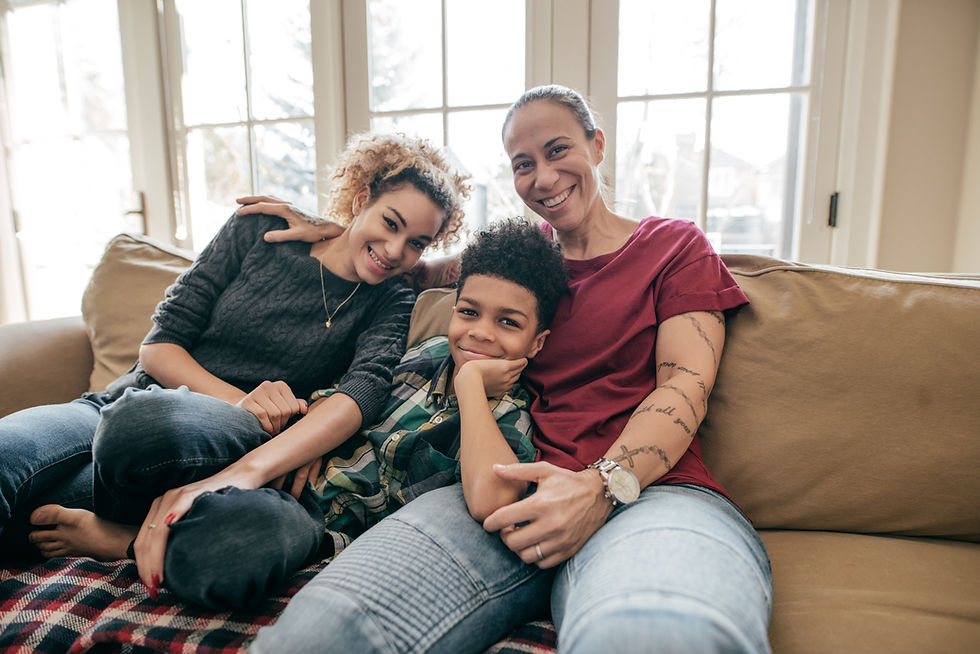How to Help Children Identify their Big Feelings
- Christopher Schaft
- Oct 6, 2023
- 4 min read
Updated: Nov 29, 2023
It could be difficult for your children to identify their feelings. It’s even hard for adults to do the same sometimes. But, how can we teach our young kids about the importance of communicating these feelings?
What’s a “big feeling”? Any feeling that is unidentifiable to children can be considered as big. By not being able to understand their own feelings, can ultimately cause a disruption in their behavior. It’s frustrating to not be able to tell someone how you feel. I’m sure that most can connect to that.
Tools that Can Be Helpful and Why
When knowing this, it can be easier to point to a diagram, list, picture, and so on. This can relieve their stress coming from their unknown feelings. These examples provide concepts that kids, especially when young, can easily grasp. It’s just one of the first steps when learning to communicate.
These strategies help children feel like they have a sense of control when they are able to express themselves. Being able to communicate by using these tools also assists with the understanding of it all. For instance, if a child is portraying a “big feeling” and is unable to verbally express their emotion, they can point to what they are feeling on a list, picture, or diagram. The person they are communicating with will then understand which feeling the child is trying to express. These actions may be able to bring not just a sense of control, but also a feeling of relief when able to “tell” someone.
Age-appropriate communication is another thing to consider when using these tools. It doesn’t make much sense to use pictures for teenagers like it doesn’t make sense to articulate detailed words for younger children. Although when learning about emotions and feelings, teaching more of the connected vocabulary could help along the way. For younger children, it could be better to focus on the vocabulary of the basic emotions. For teenagers, providing more detailed versions could help with identifying the sole reason of a feeling. For example one can describe their feeling as “mad” but could it be because of feeling frustrated or overwhelmed? When teaching younger children the basic vocabulary for describing emotions, you can describe what they can look like or feel like. For example, for “happy”, there is smiling, sometimes jumping or clapping hands, having fun, and even laughing.
Storytelling and Books
I believe using books can be very beneficial when working with children. It adds details and examples that the audience can relate to. In sessions, I include books about feelings, growth mindsets, social skills, flexible thinking, social thinking, and more. Books can help children understand the reasons for their feelings or help identify them. Books can also provide examples of tools to use when they are feeling something. For example, many coping skills are provided in books about feelings. Two authors that I enjoy reading with my young clients are Julia Cook and Diane Alber. Cook writes about a wide range of behaviors, emotions, and actions. Alber has many books that help introduce feelings and emotions.
Zones of Regulation
The zones of regulation is a popular tool used in schools with young children. It presents a green, blue, yellow and red zone. Underneath the sections, it shows some examples of the feelings correlated to each zone. Knowing that the zones of regulation is a common tool, it may be beneficial to bring into the home to keep a consistent pattern of communication.
Where the Feeling is Felt
Something else to consider to help identify your child’s feeling is to understand where and/or how they feel it. Is it their stomach? Any tension in their head? Are they sweaty? Are they tensing their muscles anywhere? When this is identified, it is easier to think of ways to relax their body. If your child is able to explain where and/or how they are feeling their emotion, that’s great. This shows that they understand how they might be affected by these emotions. But, the next thing is to figure out what can help calm them. This calming thought or tool is considered a coping skill.
Does Your Child Need a Break?
There is one thing that is important to remember when your child is having a big feeling. Do they need a break? Oftentimes, kids may “act up” more when feeling overwhelmed. It’s essential to consider the why and that sometimes all someone needs is a break before being able to communicate. Setting a visible timer for the break is something to consider.
Professional Help
There’s a lot of pressure around communicating feelings. Don’t let that pressure feel like you haven’t tried your best. It’s okay to seek professional help if a child’s big feelings persist, become disruptive, or seem to be related to underlying issues. It takes a lot of work to implement different strategies to assist your child. It’s a process to keep them consistent, as well. But with teamwork, you can all make a change in the pattern of behavior.

Written by,
Eliana Cohn, LSW
www.cuttingedge-therapy.com




Comments